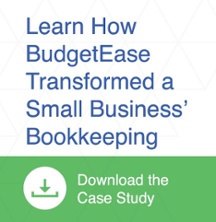
Hey there, nonprofit warriors! Ready to dive into the exciting world of budgeting for your volunteer program? Buckle up, because we're about to make numbers fun (yes, really)!
Introduction
Budgeting might sound like a snooze-fest, but trust me, it's the secret sauce to running a smooth and successful volunteer program at your nonprofit. Think of it as your financial GPS, guiding you to your goals without any detours. In our recent session, we uncovered some golden nuggets on how to budget like a pro.
Why Bother with a Budget?
Great question! Here are a few reasons why a budget is your best friend:
- Validate Financial Needs and Goals: A budget helps you figure out what you need and how to get there. It's like having a map for your financial journey.
- Plan and Allocate Resources Effectively: With a budget, you can strategically plan where to spend your money for maximum impact. It's all about getting the biggest bang for your buck.
- Track Progress and Hold Accountable: Regular budget check-ins keep you on track and ensure everyone is pulling their weight. It's like having a financial fitness tracker.
- Grant Planning and Acquisition: When applying for grants, a detailed budget shows funders that you mean business. They want to see that their money will be put to good use.
Determining Costs
Now, let's talk about costs. List all the expenses related to running a nonprofit volunteer program. It is like a financial scavenger hunt!
Reviewing Costs
Communication is key when it comes to reviewing costs. Make sure you are using the same language as your administration to avoid any misunderstandings that will cause undue hardship on your finance office. Think of it as financial diplomacy. Use their language, don’t expect them to conform to yours. Finding cost information is easy from industry benchmarks, vendor quotes, and historical data. It's all about being a savvy shopper.
Determining Value
Understanding the value of your volunteer program is crucial but also the hardest to quantify. We looked at factors like program impact, community benefits, and sustainability. It's like putting a price tag on the priceless. Using surveys to determine changes in client satisfaction, volunteer experience, and donations from volunteers will help you grow the number of volunteers you have, thereby increasing the value you are providing for your organization. Assigning a standard rate for volunteer time to quantify their contributions. Every hour counts, literally.
Using the Budget for P&L Management
A profit and loss statement (P&L) is your financial report card. It summarizes your revenues, costs, and expenses to show your value to the organization. Don’t limit your activities to just cover costs, budget to show that there is an actual dollar value to the volunteer program. This is an aspiration that can be 10, 20, or 30% more than the expenses that you are incurring.
Get a recap of your expenses to budget monthly so that you can plan accordingly to spend remaining resources optimally. Regular analysis helps you stay on top of your financial game and make informed decisions. Plus, incorporating customer and volunteer feedback can refine your budget and improve program effectiveness.
Conclusion
Budgeting for a nonprofit volunteer program might seem daunting, but with the right tools and mindset, it's totally doable. Remember to engage stakeholders in the process for transparency and accountability. Most importantly, use your budget to manage resources effectively and enhance the impact of your volunteer programs.
(Download our useful 'Budget for Volunteer Program' template.)





